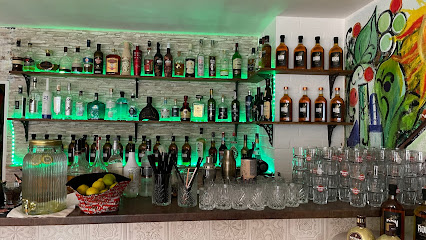
Vier Karyatiden: Guardians of Art in Düsseldorf
Discover Düsseldorf's Vier Karyatiden: neoclassical sculptures embodying art's enduring spirit, a testament to cultural heritage near St. Andrew's Church.
The Vier Karyatiden, or Four Caryatids, are striking sandstone sculptures located near St. Andrew's Church in Düsseldorf's city center. Sculpted by Leo Müsch in 1879/81, they originally adorned the facade of the old Kunsthalle, which was destroyed during World War II. These majestic figures, standing at approximately 4 meters tall, represent the muses of visual arts: architecture, sculpture, painting, and music. Each Caryatid holds symbolic attributes, such as a temple facade, a sculptor's chisel, a painter's palette, and a lyre. Saved from the war, they now stand as a testament to Düsseldorf's artistic heritage, offering a glimpse into the city's rich cultural past and serving as a reminder of the resilience of art in the face of destruction. Their presence adds a touch of classical elegance to the modern cityscape, inviting visitors to reflect on the enduring power of artistic expression.
A brief summary to Vier Karyatiden
- Düsseldorf, Stadtbezirk 1, 40213, DE
- Visit website
Local tips
- Visit during the early morning or late afternoon for the best lighting and fewer crowds, allowing for better photography and a more intimate viewing experience.
- Take a moment to observe the intricate details of each Caryatid's attributes, reflecting the essence of architecture, sculpture, painting, and music.
- Combine your visit with a tour of the nearby Kunsthalle Düsseldorf to appreciate the Caryatids' original context and explore contemporary art.
Getting There
-
Walking
From the Düsseldorf Hauptbahnhof (main train station), walk north along Konrad-Adenauer-Platz, then turn left onto Heinrich-Heine-Allee. Continue straight, passing the Opernhaus Düsseldorf on your right. Turn right onto Andreasstraße. The Vier Karyatiden will be visible on your left, near St. Andrew's Church. The walk is approximately 15 minutes and offers a pleasant stroll through the city center.
-
Public Transport
From Düsseldorf Hauptbahnhof, take any U-Bahn line (U70, U74, U75, U76, U77, U78, or U79) to Heinrich-Heine-Allee station. From there, exit towards Andreasstraße and walk a short distance to St. Andrew's Church. The Vier Karyatiden are located just outside the church. A single ticket (Kurzstrecke) costs approximately €1.90.
-
Taxi/Ride-Share
A taxi or ride-share from Düsseldorf Hauptbahnhof to the Vier Karyatiden will take approximately 5-10 minutes, depending on traffic. The estimated fare is between €8-€12. Direct the driver to Andreasstraße near St. Andrew's Church (St. Andreas Kirche).
Discover more about Vier Karyatiden
Iconic landmarks you can’t miss
Kay-und-Lore-Lorentz-Platz
0.0 km
A public square in Düsseldorf's Old Town honoring Kay and Lore Lorentz, founders of the Kom(m)ödchen cabaret, a place of reflection and appreciation for the arts.
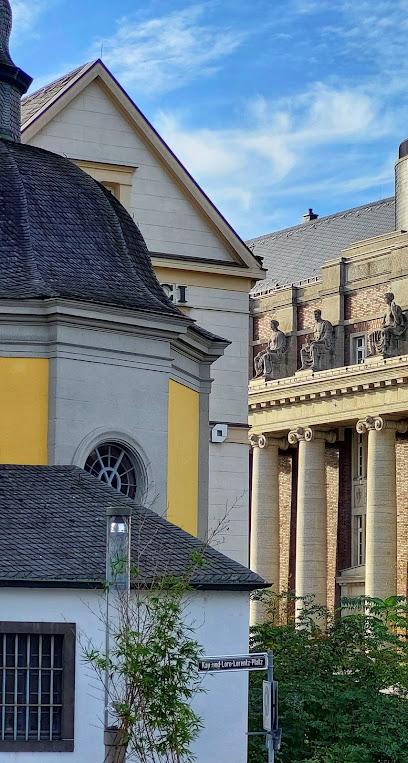
Heinrich-Heine-Allee
0.1 km
Experience Düsseldorf's vibrant heart at Heinrich-Heine-Allee, a blend of upscale shopping, historical landmarks, and cultural experiences in a bustling, tree-lined boulevard.
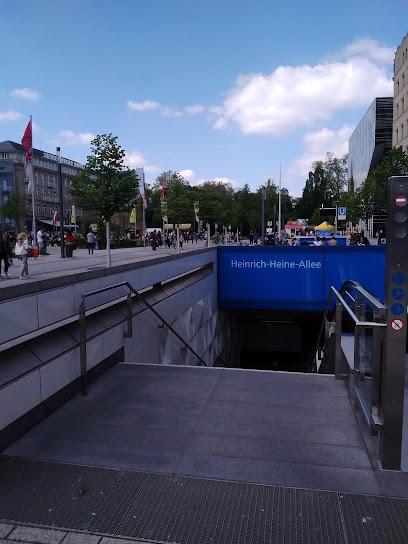
Gedenkbrunnen zum 650. Jahrestag Düsseldorfs
0.3 km
Discover Düsseldorf's vibrant history at the Gedenkbrunnen, a stunning memorial fountain celebrating the city's 650th anniversary and artistic heritage in the heart of the city.

Kriegerdenkmal im Hofgarten
0.3 km
Reflect on history and honor the fallen at the Kriegerdenkmal im Hofgarten, a serene war memorial nestled within Düsseldorf's oldest public park, a tranquil escape in the city.

Schlossturm
0.3 km
Explore Düsseldorf's maritime history and enjoy panoramic city views from the iconic Schlossturm, the last remnant of the city's castle, located in the heart of the vibrant Altstadt.
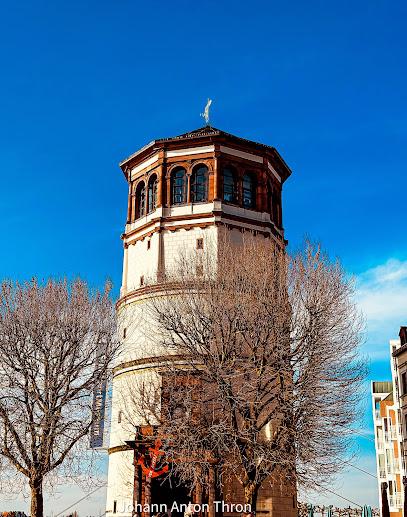
Burgpl. 1
0.3 km
Discover the architectural beauty and vibrant atmosphere of Burgplatz, a must-visit square in the heart of Düsseldorf.
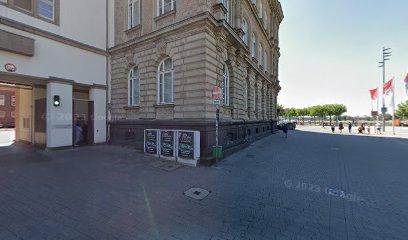
Marktpl. 2
0.3 km
Discover Düsseldorf's Marktplatz: A historic square in the heart of the Old Town, surrounded by stunning architecture, lively events, and culinary delights, offering a true taste of German culture.
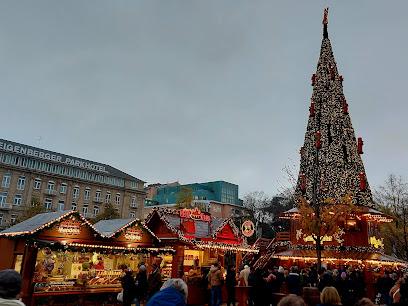
Kö-Bogen
0.3 km
Explore Kö-Bogen in Düsseldorf, where modern architecture meets luxury shopping amidst vibrant urban landscapes.
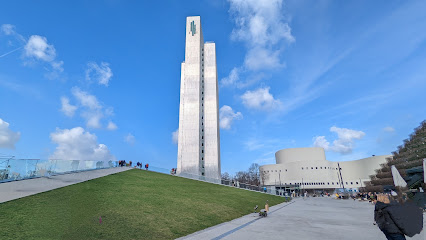
Düsseldorfs bekannteste Uhr
0.3 km
A timeless landmark on Düsseldorf's Königsallee, this iconic clock is a beloved meeting point and a symbol of the city's blend of luxury, history, and vibrant urban life.
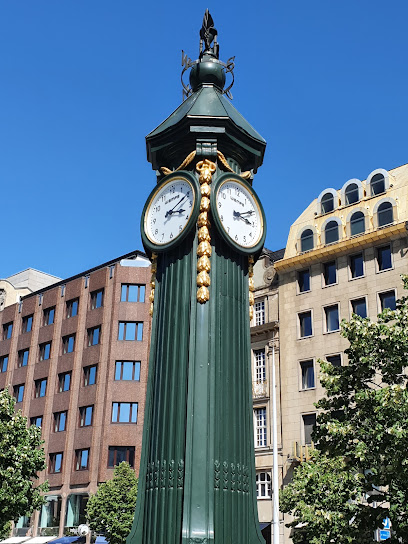
Rheintreppe
0.3 km
Experience stunning views of the Rhine River and Düsseldorf’s skyline at Rheintreppe, a vibrant observation deck perfect for leisurely strolls and photography.
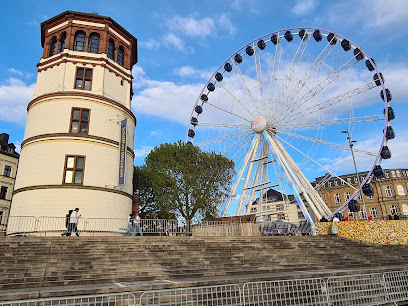
Tritonenbrunnen
0.3 km
Discover the Tritonenbrunnen, a stunning fountain in Düsseldorf's Königsallee, combining art, tranquility, and vibrant city life for an unforgettable experience.
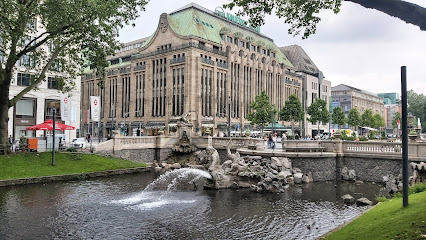
Rhine embankment promenade
0.4 km
Experience Düsseldorf's vibrant heart on the Rhine Embankment Promenade: a scenic blend of culture, cuisine, and captivating river views, perfect for leisurely strolls and unforgettable moments.
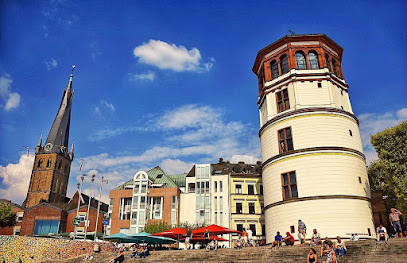
Mündung Nördliche Düssel
0.4 km
Discover the humble confluence of the Northern Düssel River and the Rhine in Düsseldorf's Old Town, a subtle landmark with historical significance and a gateway to city exploration.
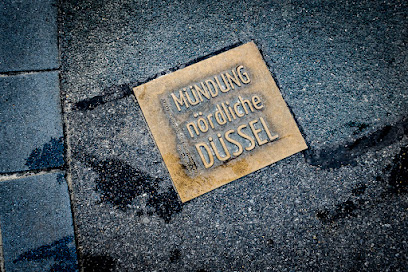
Rheinuferpromenade
0.4 km
Experience the beauty of Düsseldorf at Rheinuferpromenade, where stunning Rhine views meet vibrant local culture and outdoor dining.
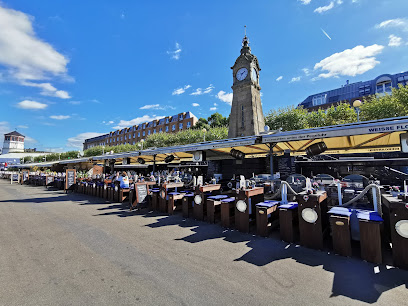
Girardet Bridge
0.4 km
Experience the architectural beauty and stunning views from Girardet Bridge in Düsseldorf, a must-visit landmark for every traveler.

Unmissable attractions to see
St. Andreas, Düsseldorf
0.0 km
Explore the architectural beauty and historical significance of St. Andreas Church in Düsseldorf, a must-visit Catholic landmark for every tourist.
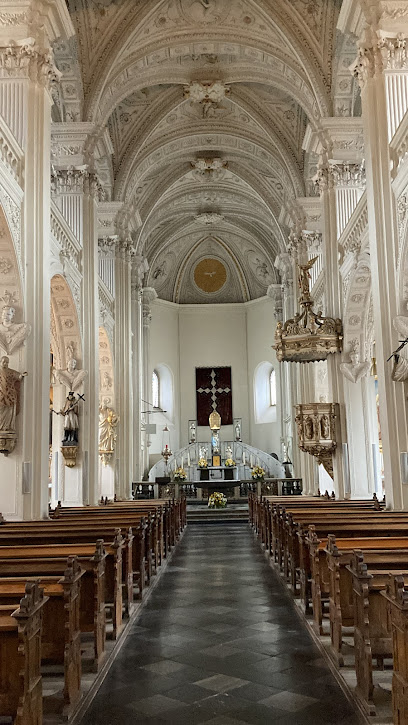
Kom(m)ödchen
0.0 km
Discover the rich cultural heritage of Düsseldorf at Kom(m)ödchen, a premier performing arts theater known for its laughter and thought-provoking performances.
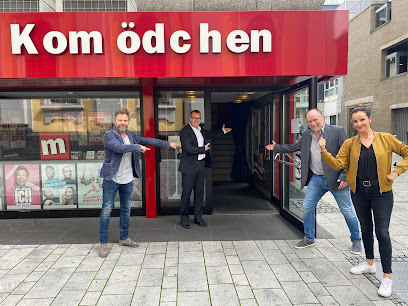
Kunsthalle Düsseldorf
0.0 km
Explore the dynamic world of contemporary art at Kunsthalle Düsseldorf, a leading art museum and cultural hub in Germany.
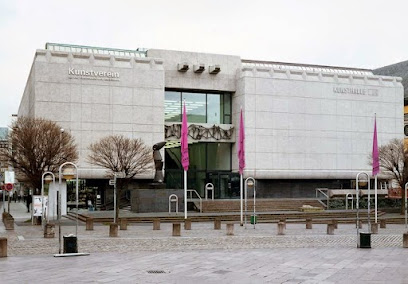
Kunstsammlung Nordrhein-Westfalen
0.1 km
Discover the dynamic world of modern art at the Kunstsammlung Nordrhein-Westfalen, a premier museum in Düsseldorf showcasing influential contemporary masterpieces.
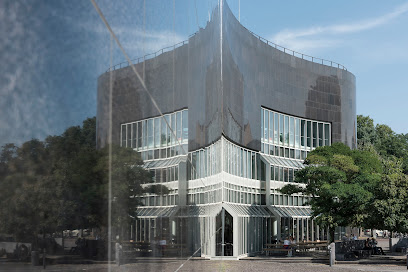
Memorial Dusseldorf
0.1 km
Explore the rich tapestry of Düsseldorf's history at Memorial Düsseldorf, a cultural center dedicated to remembrance and education.
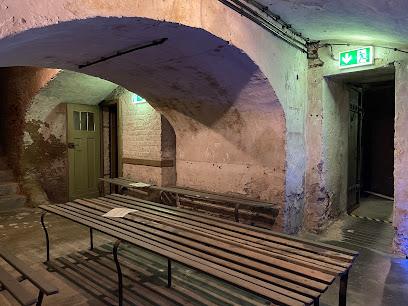
Bolkerstraße
0.1 km
Explore Bolkerstraße, Düsseldorf's vibrant town square, filled with shops, cafés, and rich history, perfect for an unforgettable city experience.

German Oper am Rhein
0.1 km
Discover the cultural gem of Düsseldorf at the German Oper am Rhein, where world-class opera and ballet performances await in an enchanting setting.
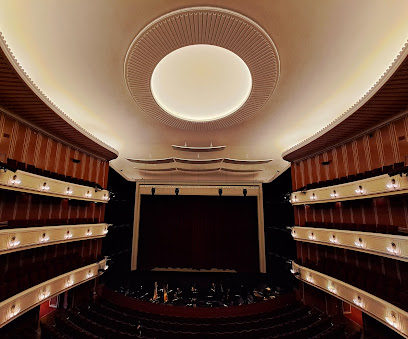
Löwenhaus
0.2 km
Discover the rich history and architectural beauty of Löwenhaus in Düsseldorf, a must-visit destination for history enthusiasts and culture seekers.
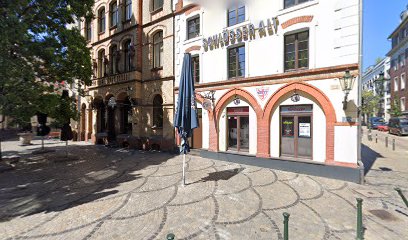
Die längste Theke der Welt
0.2 km
Experience Düsseldorf's Altstadt, the Longest Bar in the World, where vibrant nightlife meets rich local culture and unforgettable culinary delights.

Olbermann Brauerei
0.2 km
Discover the heart of Düsseldorf’s brewing culture at Olbermann Brauerei, where exceptional craft beers and local charm await.
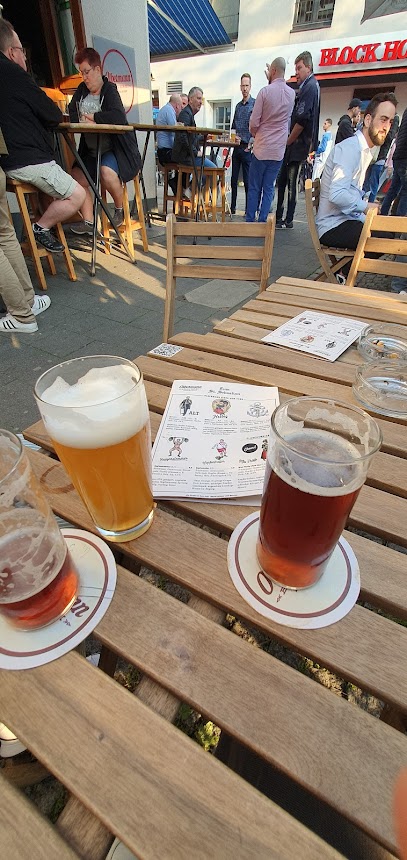
Altstadt
0.2 km
Discover the charm of Düsseldorf's Altstadt, where historic streets meet vibrant nightlife and delicious local cuisine in the heart of the city.
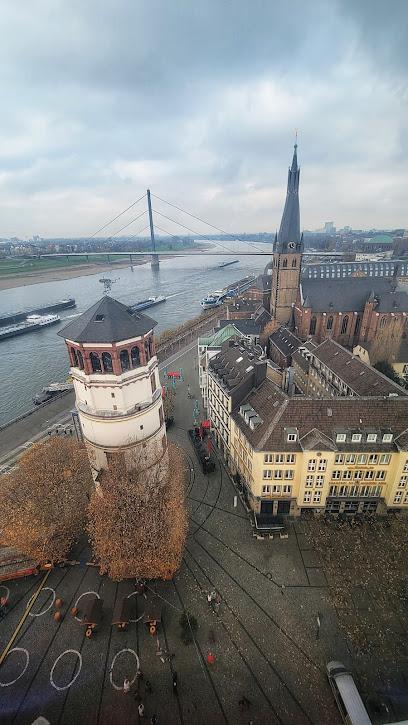
Heinrich-Heine-Platz
0.2 km
Discover the vibrant atmosphere of Heinrich-Heine-Platz in Düsseldorf, where culture, history, and culinary delights await every traveler.

Stadterhebungsmonument
0.3 km
Discover Düsseldorf's rich heritage at the Stadterhebungsmonument, a stunning historical landmark celebrating the city's legacy since 1288.
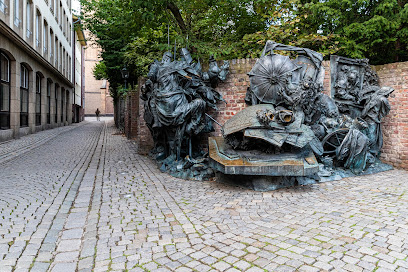
hohe Terrasse Heinrich-Heine-Platz
0.3 km
Discover tranquility and breathtaking views at Hohe Terrasse Heinrich-Heine-Platz, a serene escape in the vibrant city of Düsseldorf.
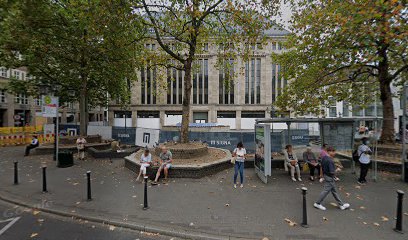
Lambertushaus
0.3 km
Experience the serene beauty and vibrant community spirit of Lambertushaus, a stunning church and center in the heart of Düsseldorf.
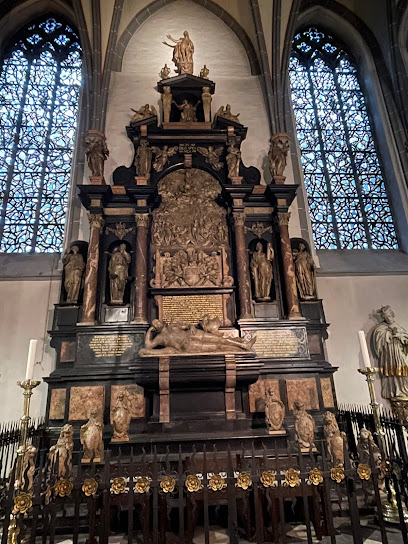
Essential places to dine
Brasserie Stadthaus
0.1 km
Experience exquisite French cuisine at Brasserie Stadthaus in Düsseldorf – where elegance meets culinary excellence.

La Bouillabaisse
0.1 km
Savor exquisite seafood dishes at La Bouillabaisse in Düsseldorf – where fresh flavors meet culinary artistry.
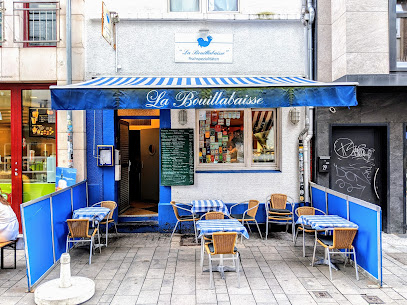
Casita Mexicana
0.1 km
Discover the vibrant flavors of Mexico at Casita Mexicana in Düsseldorf - where authentic cuisine meets lively ambiance.
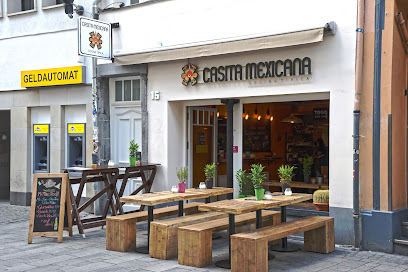
Weinhaus Tante Anna
0.1 km
Experience authentic German cuisine paired with exquisite wines at Weinhaus Tante Anna in Düsseldorf's vibrant dining scene.

Vente
0.2 km
Discover the culinary delights of Vente in Düsseldorf - where tradition meets modernity in every bite.
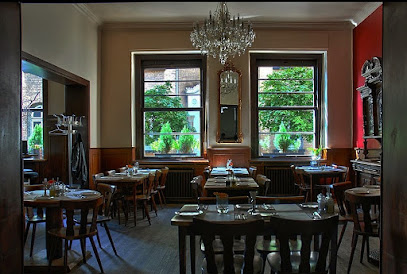
Louisiana Düsseldorf Altstadt
0.2 km
Discover Louisiana Düsseldorf Altstadt - where American flavors meet vibrant nightlife in the heart of Düsseldorf's historic district.
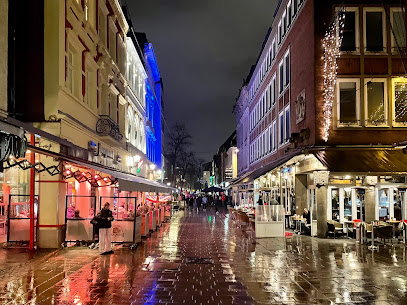
Le Petit Chef - Düsseldorf
0.2 km
Experience an extraordinary dining adventure at Le Petit Chef in Düsseldorf - where culinary art meets storytelling for an unforgettable meal.

Restaurant Pink Pepper
0.2 km
Experience culinary excellence at Restaurant Pink Pepper in Düsseldorf - where contemporary dining meets exquisite flavors.
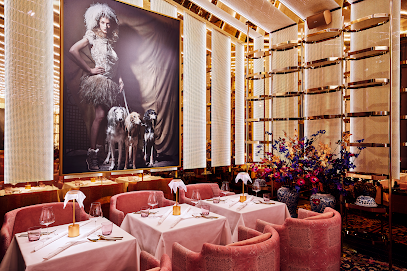
Jones
0.2 km
Experience exquisite dining at Jones Restaurant in Düsseldorf – where local flavors meet culinary artistry.
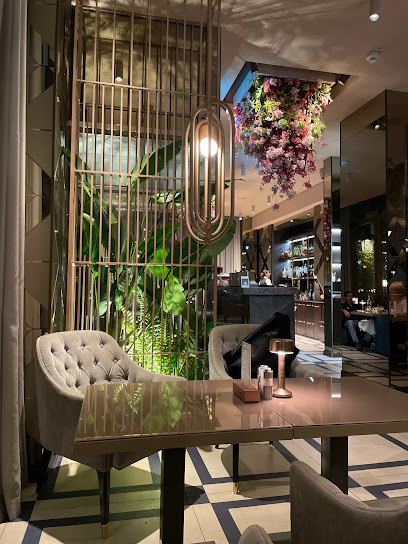
Schwan Restaurant Düsseldorf Altstadt
0.2 km
Experience authentic German cuisine at Schwan Restaurant in Düsseldorf's Altstadt – a must-visit culinary destination.
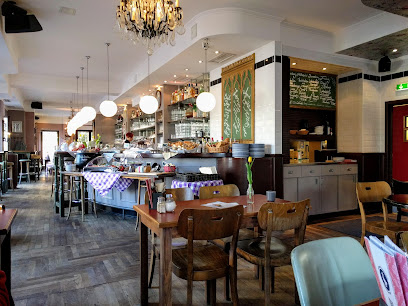
BLOCK HOUSE Düsseldorf
0.2 km
Indulge in top-notch steaks at BLOCK HOUSE Düsseldorf - where flavor meets hospitality in a warm and inviting setting.
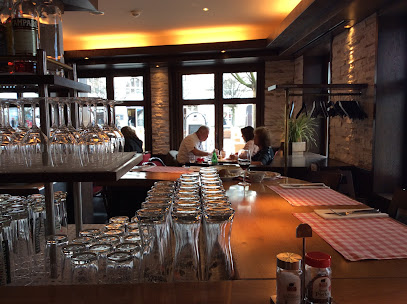
Manhattan | Restaurant Düsseldorf
0.2 km
Discover Manhattan Restaurant in Düsseldorf - A gastronomic haven blending Italian and New American cuisine with an exciting bar scene.
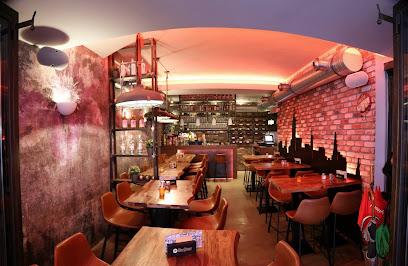
Las Tapas - Düsseldorf
0.2 km
Experience authentic Spanish flavors at Las Tapas in Düsseldorf, where every dish tells a story.
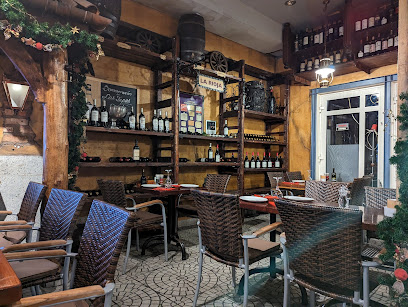
Schweine Janes Altstadt
0.2 km
Experience authentic German cuisine at Schweine Janes Altstadt in Düsseldorf's historic district; where flavors meet tradition.
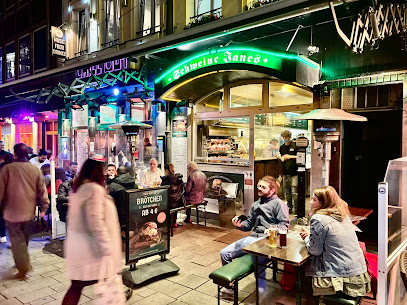
El Lazo
0.2 km
Experience exceptional steak dining at El Lazo in Düsseldorf—where quality meets flavor in every bite.
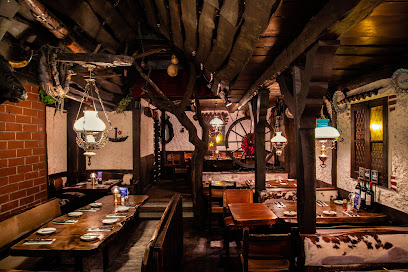
Markets, malls and hidden boutiques
Sorti
0.1 km
Discover unique fashion at Sorti, a chic clothing boutique in the heart of Düsseldorf, where style meets quality for an unforgettable shopping experience.

GALERIA Düsseldorf Königsallee
0.2 km
Experience a shopping paradise at GALERIA Düsseldorf Königsallee, where fashion meets elegance in the heart of the city.
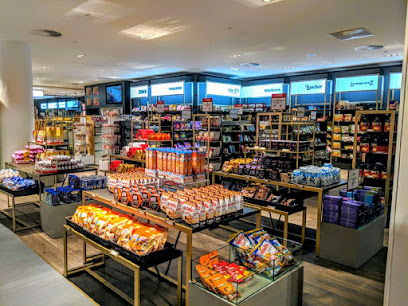
SOLO & LYA by SOLO
0.2 km
Explore the chic women's clothing boutique SOLO & LYA in Düsseldorf, featuring unique styles and contemporary fashion for the modern woman.

déjà vu Boutique Düsseldorf
0.2 km
Discover unique women's fashion at déjà vu Boutique in Düsseldorf, where style meets local artistry in an inviting atmosphere.
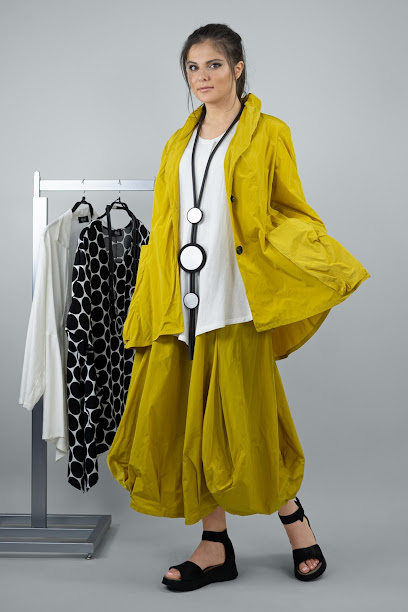
Jeckes Lädchen
0.3 km
Discover authentic souvenirs at Jeckes Lädchen, a charming store in the heart of Düsseldorf offering unique gifts and local treasures.
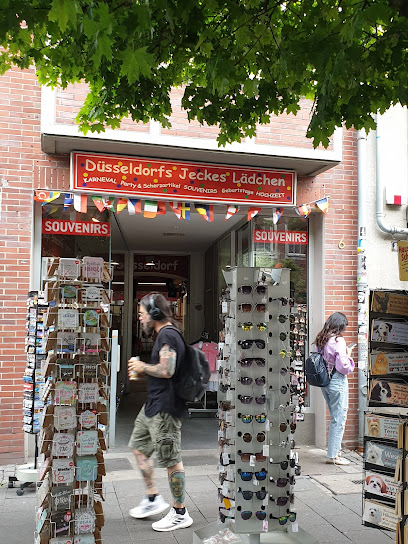
Unique Store
0.3 km
Discover the elegance of formal wear and trendy clothing at the Unique Store in Düsseldorf, your ultimate fashion destination.
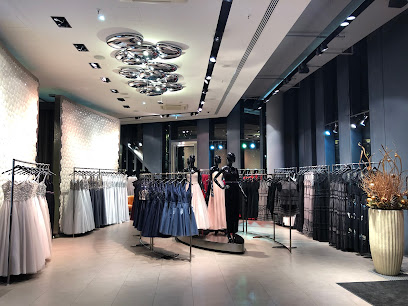
VERSACE
0.3 km
Discover luxury and elegance at Versace in Düsseldorf, where high fashion meets exquisite craftsmanship in a stunning shopping experience.
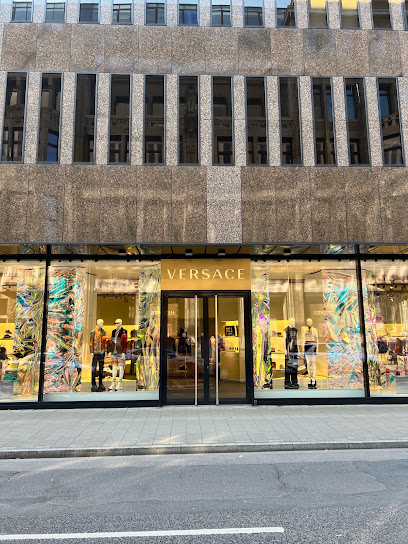
Subdued
0.3 km
Discover unique fashion trends at Subdued, the chic boutique in Düsseldorf that offers stylish clothing for every occasion.
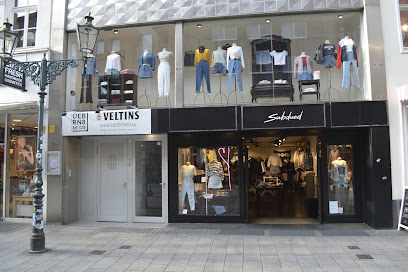
Talbot Runhof Boutique Düsseldorf
0.3 km
Discover timeless elegance and contemporary style at Talbot Runhof Boutique in the heart of Düsseldorf, where fashion meets luxury.
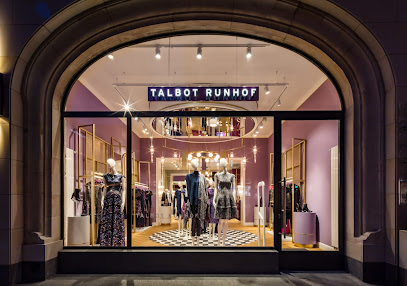
Vintage Galerie Vaseline
0.3 km
Explore the unique vintage finds at Galerie Vaseline, a charming used furniture store in Düsseldorf, perfect for eclectic decor enthusiasts.
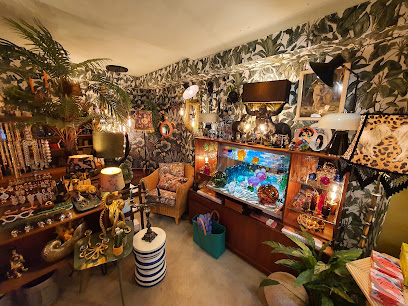
Closed Women's & Men's Store Düsseldorf
0.3 km
Explore Closed in Düsseldorf for the latest in contemporary men's and women's fashion, where style meets sustainability.

Vintage Paradise
0.4 km
Explore Vintage Paradise in Düsseldorf for a unique selection of vintage clothing, accessories, and decor that brings nostalgia to life.
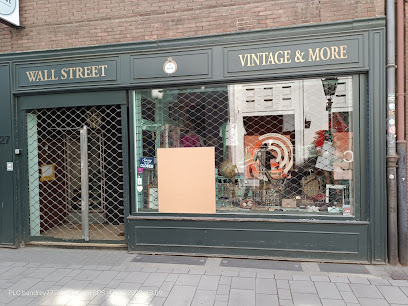
G-Star RAW Store
0.4 km
Explore the G-Star RAW Store in Düsseldorf for high-quality denim, trendy clothing, and stylish accessories that define modern fashion.
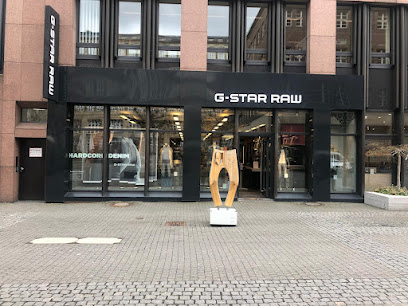
Breuninger Düsseldorf
0.4 km
Experience luxury shopping at Breuninger Düsseldorf, where fashion meets elegance in the heart of the city.

Louis Vuitton Düsseldorf
0.4 km
Discover unparalleled luxury shopping at Louis Vuitton Düsseldorf, featuring exquisite leather goods, fashion accessories, and fine jewelry in a stunning setting.
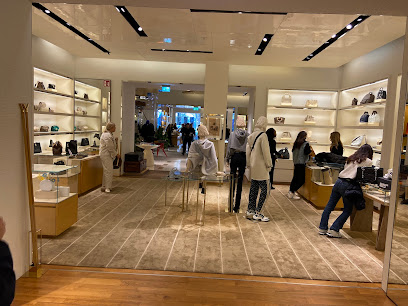
Essential bars & hidden hideouts
o’reilly’s Irish Pub & Restaurant
0.0 km
Experience the heart of Ireland in Düsseldorf at O'Reilly's Irish Pub & Restaurant, where great food, drinks, and entertainment come together.
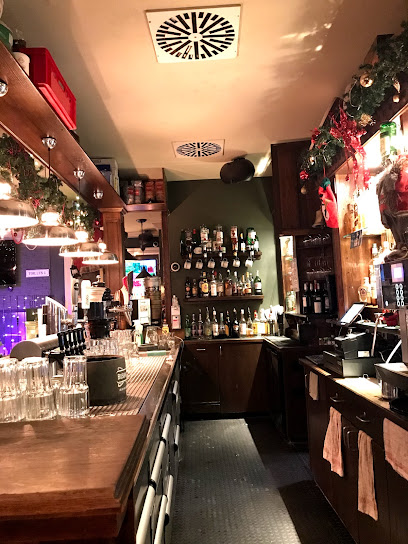
The Oak’s Bar - Düsseldorf
0.1 km
Experience the vibrant nightlife at The Oak's Bar in Düsseldorf, a cocktail haven offering live music and a welcoming atmosphere.
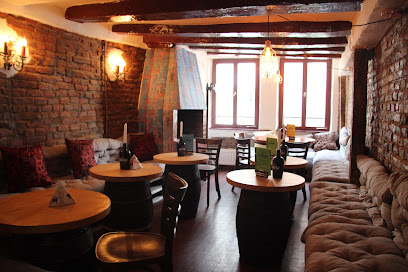
MAITAI Cocktailbar
0.1 km
Discover the lively atmosphere and creative cocktails at MAITAI Cocktailbar, a must-visit destination in Düsseldorf's nightlife scene.
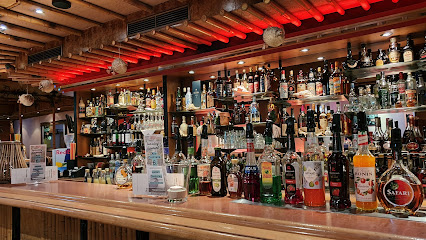
The Irish Pub Bei Fatty - Fatty's
0.1 km
Experience the vibrant atmosphere of The Irish Pub Bei Fatty in Düsseldorf, where traditional Irish fare meets lively entertainment.

Weißer Bär
0.1 km
Discover the vibrant atmosphere and delightful drinks at Weißer Bär, a must-visit bar in Düsseldorf for an unforgettable local experience.

Kostbar Düsseldorf-Altstadt
0.1 km
Experience the vibrant culinary scene at Kostbar Düsseldorf-Altstadt, where local flavors meet a modern bistro atmosphere in the heart of the city.
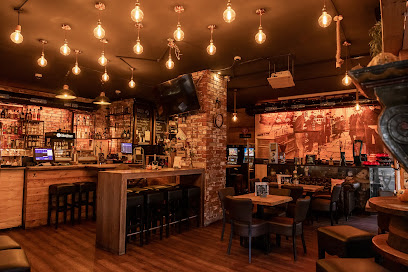
Sweetheart Düsseldorf
0.2 km
Experience the best of American cuisine at Sweetheart Düsseldorf, where vibrant atmosphere meets delicious flavors.
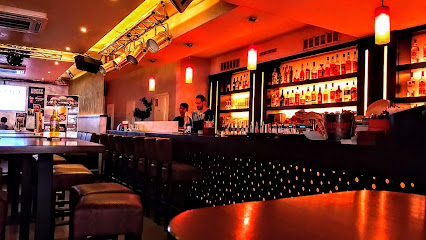
Em Pöötzke
0.2 km
Experience the soulful rhythms of jazz at Em Pöötzke, Düsseldorf's intimate and historic jazz club, where every performance is a journey through sound.
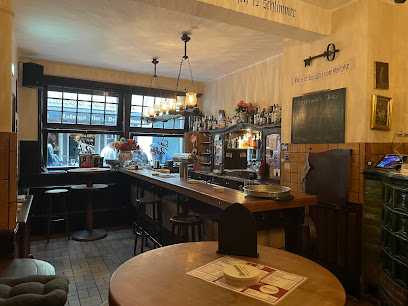
Holy Craft Beer Bar
0.2 km
Explore Düsseldorf's craft beer scene at Holy Craft Beer Bar, where unique flavors and a warm atmosphere await every visitor.
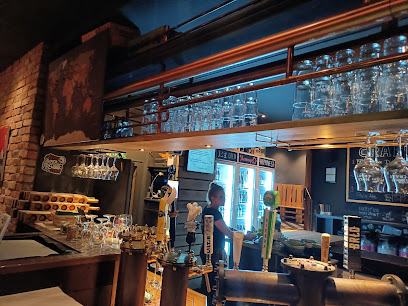
Siam Bar - Düsseldorf
0.2 km
Experience the vibrant nightlife at Siam Bar in Düsseldorf, where innovative cocktails and a lively atmosphere await.
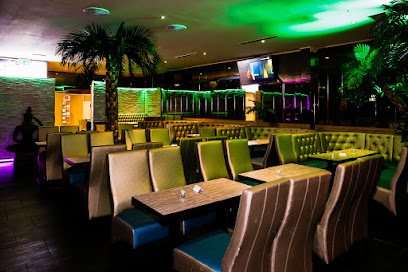
Schaukelstühlchen - Düsseldorf
0.2 km
Discover the authentic German pub experience at Schaukelstühlchen in Düsseldorf, where local brews and warm hospitality await.

BEUYS Bar
0.2 km
Discover the elegance of BEUYS Bar, Düsseldorf's premier cocktail bar, offering a vibrant atmosphere and exquisite drinks for an unforgettable night.
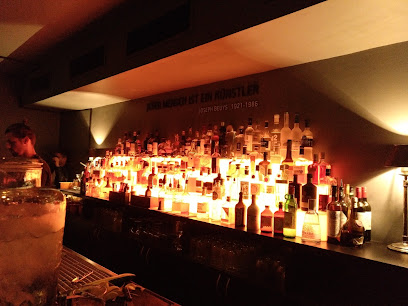
Meetingraum - Düsseldorf
0.2 km
Experience the vibrant nightlife at Meetingraum, Düsseldorf's top cocktail bar, offering expertly crafted drinks in a stylish ambiance.
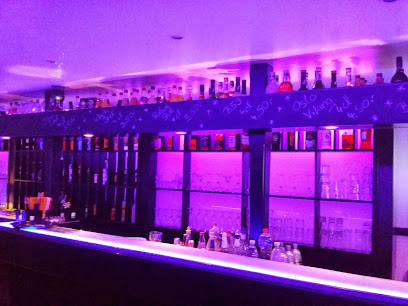
Dä Spiegel
0.2 km
Discover Düsseldorf’s culinary scene at Dä Spiegel, where traditional German flavors meet a vibrant gastropub atmosphere in the heart of the city.

Cocktailkurse Düsseldorf
0.2 km
Discover the art of mixology at Cocktailkurse Düsseldorf, where every sip tells a story and every course is a celebration of flavors.
